PROGRAM
Ciaccona (Chaconne) from Partita No. 2 in D minor, BWV 1004
J.S. Bach (1685–1750)
arr. by Michael Votta, Jr. (b. 1957)
Suite for Winds
Esther Ballou (1915–1973)
-
Allegro (quarter note = 144)
-
Lento e dolce
-
Allegro (eighth note = 176)
-
Allegro
Brad Jopek, Graduate Conductor
Symphony in B-flat
Paul Hindemith (1895–1963)
-
Moderately Fast, with Vigor
-
Andantino Grazioso
-
Fugue, Rather Broad
INTERMISSION
Shadowcatcher
Eric Ewazen (b. 1954)
-
Offering to the Sun
-
Among the Aspens
-
The Vanishing Race
-
Dancing to Restore an Eclipsed Moon
Brass Quintet
Chris Gekker, Trumpet
Theresa Bickler, Trumpet
Gregory Miller, Horn
Kevin Hertlein, Trombone
Willie Clark, Tuba
PROGRAM NOTES
Ciaccona (Chaconne)
From Partita No. 2 in D minor for Unaccompanied Violin, BWV 1004
Johann Sebastian Bach
Born: March 31, 1685, Eisenach, Germany
Died: July 28, 1750, Leipzig, Germany
Composed: 1720
Arranged for Wind Ensemble by Michael Votta, Jr.
Born: 1957
Arranged: 2021
The score calls for piccolo, 2 flutes, alto flute, 2 oboes, English horn, 3 clarinets, bass clarinet, contrabass clarinet, 2 bassoons, contrabassoon, soprano saxophone, alto saxophone, tenor saxophone, baritone saxophone, 4 horns, piccolo trumpet, 2 trumpets, flugelhorn, 2 trombones, bass trombone, euphonium, tuba, timpani, vibraphone, marimba, glockenspiel, triangle and 2 harps.
Duration: about 13 minutes
The arranger writes:
“Es muβ alles mӧglich zu machen sein” (everything must be possible) is a phrase that Bach is said to have used often. It is an apt description of this fifth and final movement of the D minor Partita for unaccompanied violin. Its 256 measures and duration of 13 minutes make it longer than the other four movements of the D minor Partita combined, and its monumental complexity and depth are simultaneously inspiring and daunting.
No less a figure than Johannes Brahms was in awe of the work. In a letter to Clara Schumann he wrote:
“On one stave, for a small instrument, the man writes a whole world of the deepest thought and most powerful feeling. If I imagined that I could have created, even conceived the piece, I am quite certain that the excess of excitement and earth-shattering experience would have driven me out of my mind. If one doesn’t have the greatest violinist around, then it is well the most beautiful pleasure to simply listen to its sound in one’s mind.”
The Ciaconna (Bach used the Italian form of the title, rather than the French “Chaconne”) is a work born out of death and drama. In 1720, Bach accompanied his employer, Prince Leopold, on a two-month journey. Upon his return, he was devastated to learn that his wife—who had been in good health when he departed—had died and was already buried. Some scholars believe that Bach poured his grief into this work, which became the capstone movement for the mostly-completed D minor partita.
The Ciaccona is also one of the most arranged works in the history of music. In the century following its first publication, the chaconne was performed in a vast array of arrangements and transcriptions, including four versions by Ferruccio Busoni (from 1892, 1902, 1907 and 1916) and one by Johannes Brahms for solo piano. Busoni also commented on the number and variety of orchestral transcriptions of the chaconne performed during the early part of the twentieth century. Among this cornucopia of arrangements there are at least four other versions for wind ensemble made by David Whitwell, Yasuhide Ito, Larry Daehn and Paul Struck.
So. Why one more?
In 1802, Johann Forkel argued that perhaps no arrangements should be made: “[The]…six solos for the violin and six others for the violoncello…absolutely admit of no second singable part set to them. By particular turns in the melody, he has so combined in a single part all the notes required to make the modulation complete as a second part is neither necessary nor possible.”
But on the other hand, this music invites—or demands—interpretation.
As a work to be performed by one violin, much of the complexity of this music is, by necessity, presented by implication. Bach subtly suggests possible contrapuntal lines; hints at a nascent figure here or there; alludes to intriguing harmonic progressions…
The experience of the work, therefore, becomes one in which each interpreter finds a unique path through the piece built on the paving-stones of personal musical experiences, memories and imaginings—a kind of “musical Rorschach inkblot test” that allows each of us to see into ourselves as we seek structure and meaning. Bach, as it were, invites both performers and listeners to “complete the picture” using their personal boxes of musical crayons.
It is this aspect of the piece that fascinates a potential arranger.
By fleshing out these possibilities, an arrangement takes away some of the constructive ambiguity of Bach’s original—therefore limiting the opportunities for a listener to “interpret”—but as Schweitzer has said about Bach’s musical era, “this epoch could not resign itself to regarding mere performers of other men’s work as artists.” And so one is drawn to recreate, reinterpret and reimagine yet again. This arrangement suggests one pathway through the work. May it stimulate you to find your own.
Philosophy of the arrangement
To me, the violin is tactile, variable and fluid—an instrument in which all aspects of music are infinitely variable (often to the frustration of violinists!). Stephen Nachmanovitch aptly describes it as “a ruthlessly honest seismograph of the soul.” Wind instruments, by contrast, tend to be more definite, fixed and concrete. The challenge in good wind playing is to emulate the fluidity and plasticity of stringed instruments—and by extension, the challenge of wind ensembles is to emulate the fluidity and flexibility of the orchestra.
How, therefore, can one connect wind instruments to a work that is the epitome of a work for strings? Perhaps by looking into the career of Bach himself. The noted musicologist Peter Williams has made a persuasive case that Bach’s “magnum opus” for organ, the Toccata and Fugue in D minor, was most likely originally composed for solo violin and later arranged for organ.
What if Bach had done the same with the Ciaccona? The organ after all, is a wind instrument—and Bach was a virtuoso organist. Might he have translated this violin work for organ and added an extempore elaboration or two?
Beyond this, the Ciaccona is essentially a solo work, and therein lies its inherent drama. There is a heroic quality about one person, holding a modestly-sized instrument confronting a work of such monumental proportion and complexity. There is an element of risk—and of courage—that is embodied in any performance of the original.
In setting the work for a large ensemble, much of the risk can be mitigated. Difficult passages for one player become much easier when shared among many. Creating a variety of textures and timbres is much easier with a large instrumental ensemble than with solo violin. I felt, however, it was vital that some of the inherent risk, danger and drama of the original find its way into the arrangement. They are as much a part of the fabric of this work as the notes.
Finally, this arrangement pays tribute to two predecessors. Ferrucio Busoni, mentioned above, made a life-long project of perfecting an arrangement of the chaconne for solo piano. Busoni also confronted the notion of transcriptions head-on: “Every notation is in itself the transcription of an abstract idea. The instant the pen seizes it, the idea loses its original form… a transcription does not destroy the archetype, which is therefore, not lost through transcription…a performance of a work is also a transcription, and still, whatever liberties it may take, it can never annihilate the original.” Busoni’s piano arrangement is inspired, brilliant and audacious; I have incorporated a few of its features into this version. And my thinking about setting Bach for wind band—like so many of my musical ideas—has been inspired by my teacher, Donald Hunsberger. This arrangement is dedicated to him.
— Program Note by Michael Votta, Jr.
Suite for Winds
Esther Ballou
Born: July 17, 1915, Elmira, New York
Died: March 12, 1973, Chichester, England
Composed: 1957
The score calls for 2 flutes, 2 oboes, 2 clarinets, 2 bassoons and 2 horns.
Duration: 10 minutes
Esther Ballou was an American composer, pianist, organist and educator. Ballou studied composition at Bennington College, Mills College and Julliard. Upon graduation from Julliard, she taught theory, harmony and beginning composition there from 1943–1950. After moving to Washington, D.C., she taught piano and theory at Catholic University from 1951–1955 before accepting a position at American University, where she taught theory, harmony, counterpoint, orchestration, ear training, sight singing and music appreciation. While at American University, Ballou developed an experimental theory program which became an influential model for other college theory programs. In 1971, she completed a manual for beginning theory classes titled Creative Explorations of Musical Elements. Ballou composed works for orchestra, chamber groups, piano, organ and voice. Her composition Capricio for Violin and Piano was the first composition by a woman composer to be premiered at the White House.
Suite for Winds was premiered in March of 1957 at Catholic University by members of the United States Air Force Band. This modern edition was prepared by Jordan E. Kinsey in consultation with the Esther Ballou Papers at American University, as this piece previously existed as an original manuscript.
— Program Note by Christine Higley
Symphony in B-flat
Paul Hindemith
Born: November 16, 1895, Hanau, Germany
Died: December 28, 1963, Frankfurt, Germany
Composed: 1951
The score calls for piccolo, 2 flutes, 2 oboes, E-flat clarinet, 4 B-flat clarinets, alto clarinet, bass clarinet, 2 bassoons, 2 alto saxophones, tenor saxophone, baritone saxophone, 4 cornets, 2 trumpets, 3 trombones, 4 horns, baritone, basses, timpani, snare drum, bass drum, cymbals, triangle and glockenspiel.
Duration: 17 minutes
German composer and educator Paul Hindemith learned the violin at a very young age. He studied music at the Hoch Conservatory, where he took lessons in composition from Arnold Mendelssohn and Bernard Sekles. In 1914, he joined the Frankfurt Orchestra and became concertmaster in 1915. He played violin in the premiere of Stravinsky’s L’Histoire du soldat in 1923.
During World War I, he played bass drum in the military band and also started a string quartet. He also managed to find time to compose. When he returned from the war, he changed from primarily playing the violin to playing the viola, and he founded the Amar String Quartet. In the 1920s, Hindemith played a key part in the organization and upkeep of the Denaushingen Festival, which is the oldest festival in the world for new music. In 1926, he commissioned new works for winds and premiered his own wind band piece, Konzertmusic for Blasorchester, Op. 41.
In 1940, Hindemith moved to America and taught composition and music theory at Yale. In 1946, he began focusing on conducting and by 1950, he was conducting much of his own music. He moved back to Switzerland in 1953 and accepted a position at the University of Zurich.
— Program Note by Christine Higley
Below are liner notes from the Peabody Conservatory's recording on their album "Trendsetters: Music for Wind Band."
The Symphony in B-flat for Concert Band by Paul Hindemith was composed at the request of Lt Col Hugh Curry, leader of the United States Army Band, and had its première in Washington, D.C., on 5th April, 1951, with the composer conducting. The three-movement symphony shows Hindemith’s great contrapuntal skill, and the organized logic of his thematic material. His melodies develop ever-expanding lines, and his skill in the organization and utilization of complex rhythmic variation adds spice and zest to the strength of his melodies. The first movement is in sonata allegro form in three sections, with the recapitulation economically utilizing both themes together in strong counterpoint. The second and third movements develop and expand their thematic material in some of the most memorable contrapuntal writing for winds. The second movement opens with an imitative duet between alto saxophone and cornet, accompanied by a repeated chord figure. The duet theme, along with thematic material from the opening movement, provides the basic material for the remainder of the movement. The closing section of the third movement utilizes the combined themes while the woodwinds amplify the incessant chattering of the first movement. The brass and percussion adamantly declare a halt with a powerful final cadence. The symphony rivals any orchestra composition in length, breadth and content, and served to convince other first-rank composers, including Giannini, Persichetti, Creston and Hovahness, that the band is a legitimate medium for serious music.
Shadowcatcher
A Concerto for Brass Quintet and Wind Ensemble
Eric Ewazen
Born: 1954, Cleveland, Ohio
Composed: 1996
In addition to the brass quintet, the score calls for piccolo, 3 flutes, 2 oboes, 3 clarinets, bass clarinet, contra alto clarinet, 2 bassoons, contrabassoon, 2 alto saxophones, tenor saxophone, baritone saxophone, 4 trumpets, 4 horns, 2 trombones, bass trombone, 2 euphoniums, tuba, double bass, timpani, snare drum, suspended cymbal, tam-tam, vibes, marimba, chimes, bells, triangle, wood block, maracas, 2 tom-toms, shaker and crotales.
Duration: 30 minutes
The composer writes:
Edward Curtis, the great American photographer who traveled throughout the American West during the early decades of the 20th century, took literally tens of thousands of photographs of Native Americans. He chronicled their ancient lifestyle—capturing a time and place destined to disappear in the onrush of the modern age. His mysterious, beautiful and powerful photographs had a distinctive play of light and dark, and the Native Americans dubbed him the “Shadowcatcher.” Four of his photographs are the inspiration for this composition:
-
Offering to the Sun (Tewa, 1925) – between the rock cliffs at San Idelfonso, a Tewa Indian, clutching feathers, raises his arms in supplication to the brilliant sunrise. The opening brass quintet music, with free rhythms and ornamentation, is influenced by traditional Native American flute music—complex and improvisational. A quiet, prayerful chorale leads to music portraying the beauty and excitement of a new day.
-
Among the Aspens (Chippewa, 1926) – portrait of a teepee in the midst of a thick grove of Aspen trees bordering a stream. An introduction, consisting of traditional Indian drum beats and pentatonic melodies, leads to a scherzo portraying the rushing waters of the innumerable streams and rivers of the Chippewa nation.
-
The Vanishing Race (Navajo, 1904) – on horseback, a group of Native Americans in silhouette, slowly ride into an uncertain darkness—an uncertain future. Using motives and rhythms of Indian memorial songs commemorating the dead, the music is alternatively noble, sad, tragic, angry and accepting.
-
Dancing to Restore an Eclipsed Moon (Kwakiutl, 1914) – dancers surrounding a smoking fire. The ancient Kwakiutl of the Pacific northwest coast had a belief that the eclipsed moon was being swallowed by a creature of the night sky. By lighting a bonfire of old clothes and hair, they believed the stench would make the monster sneeze, thus disgorging the moon. The music is a programmatic portrayal of this legend. A dark, cold night with clouds rolling in front of the moon leads to the gradual lunar eclipse. Using heavy Indian drum beats, the fire is lit and the frenetic dance begun. The dance culminates in a brass quintet cadenza—a sneeze—and the quiet return of the moon as feelings of joy and peace bring the work to a close.
Shadowcatcher was commissioned by and is gratefully dedicated to the American Brass Quintet who premiered the work with the Butler University Wind Ensemble under the direction of Robert Grechesky in Indianapolis, Indiana, in October 1996. The piano reduction of the work was completed in July 1998. The orchestral premiere of Shadowcatcher took place in September 1999 in Mexico City with the American Brass Quintet and the Orquesta Sinfonico Carlos Chavez, Jèsus Medina conductor.
— Program Note by Eric Ewazen
CONDUCTORS
.jpg) MICHAEL VOTTA, JR.
MICHAEL VOTTA, JR.
Votta has been hailed by critics as “a conductor with the drive and ability to fully relay artistic thoughts” and praised for his “interpretations of definition, precision and most importantly, unmitigated joy.” Ensembles under his direction have received critical acclaim in the United States, Europe and Asia for their “exceptional spirit, verve and precision,” their “sterling examples of innovative programming” and “the kind of artistry that is often thought to be the exclusive purview of top symphonic ensembles.”
He currently serves as director of bands at the University of Maryland School of Music where he holds the rank of professor. Under his leadership, the UMD Wind Orchestra (UMWO) has been invited to perform at the international conference of the World Association of Symphonic Bands and Ensembles as well as multiple national and divisional conferences of the College Band Directors National Association. UMWO has also performed with major ensembles such as the Baltimore Symphony Orchestra, the Orpheus Chamber Orchestra, Eighth Blackbird and the Imani Winds. UMWO has commissioned and premiered works by Stephen Jaffe, Andre Previn, Steven Mackey, Alvin Singleton, James Syler and numerous others.
Votta has taught conducting seminars in the US, Israel and Canada, and has guest conducted and lectured throughout the world with organizations including the Beijing Wind Orchestra, the Prague Conservatory, the Eastman School of Music, the Cincinnati College-Conservatory of Music, the National Arts Camp at Interlochen, the Midwest Clinic and the Conductors Guild.
His performances have been heard in broadcasts throughout the US, on Austrian National Radio (ÖRF) and Southwest German Television, and have been released internationally on the Primavera label. Numerous major composers including George Crumb, Christopher Rouse, Louis Andriessen, Karel Husa, Olly Wilson, Barbara Kolb and Warren Benson have praised his performances of their works.
His arrangements and editions for winds have been performed and recorded by university and professional wind ensembles in the US, Europe and Japan. He is also the author and editor of books and articles on wind literature and conducting.
He is currently vice president of the College Band Directors National Association. He has served as president of the Big Ten Band Directors Association and editor of the CBDNA Journal, and has been a member of the boards of the International Society for the Investigation of Wind Music (IGEB) and the Conductors Guild.
Before his appointment at Maryland, Votta held conducting positions at the University of North Carolina-Chapel Hill, Duke University, Ithaca College, the University of South Florida, Miami University (Ohio) and Hope College.
As a clarinetist, Votta has performed as a soloist throughout the US and Europe. His solo and chamber music recordings are available on the Partridge and Albany labels.
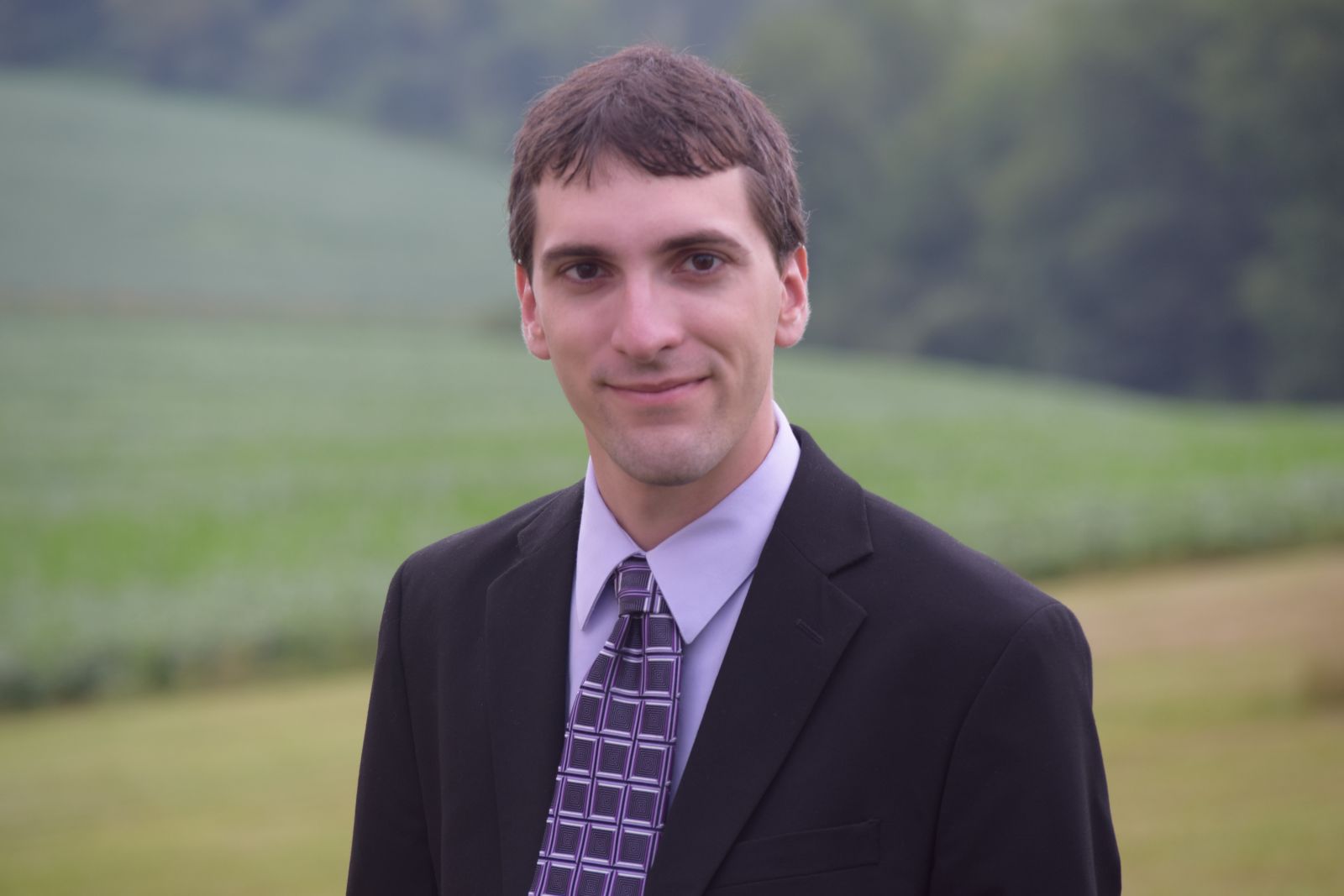 BRAD JOPEK
BRAD JOPEK
Jopek is currently a first-year Doctor of Musical Arts wind conducting student at the University of Maryland School of Music studying under Michael Votta, Jr. Jopek previously served as the music and artistic director of River Cities Concert Band in Louisville, Kentucky, where he worked to increase the band’s outreach in the Kentuckiana area, collaborating with local community bands and establishing chamber ensembles to reach underserved communities.
Jopek was an active assistant conductor for several ensembles at the University of Louisville. He led the University Symphony Orchestra in a performance of Fanfare for Louisville by Witold Lutosławski at the 62nd Annual College Music Society conference in Louisville, Kentucky, and he worked as a rehearsal conductor for the University Sinfonietta’s performances with the 2019 and 2020 Kentucky Music Educators Association (KMEA) Intercollegiate Choir and the University of Louisville Concerto Competition. He also served as assistant conductor and operations manager for the 2019 University of Louisville Sinfonietta Costa Rica tour and collaboration celebrating the 25th anniversary of the Instituto Costarricense Pro Música Coral.
Jopek served as assistant conductor of the University of Louisville Saxophone Ensemble, which performed at the 2017 KMEA Conference featuring student arrangements of standard wind and orchestral repertoire. Jopek also worked with the saxophone ensemble as an arranger, mentored student composers and conductors, and conducted a world premiere performance of When I Arrive by Jeffrey Fox. In addition, he also volunteered with the University of Louisville Community Band as assistant conductor and percussionist.
Outside of conducting, Jopek served as an administrative assistant at the University of Louisville for numerous departments including the Grawemeyer Award for Music Composition, the Committee on Academic Performance and NCAA Faculty Athletics Representative through the university president’s office, Academic & Professional Studies, Performance Studies, and the Dean’s Office for the School of Music and University Libraries.
Jopek holds a Bachelor of Music Education from Grove City College and two Master of Music degrees from the University of Louisville in wind and orchestral conducting. He has studied conducting with Edwin Arnold, Joseph Pisano, Jeffery Tedford, Frederick Speck, Kimcherie Lloyd and Amy Acklin.
GUEST COMPOSER
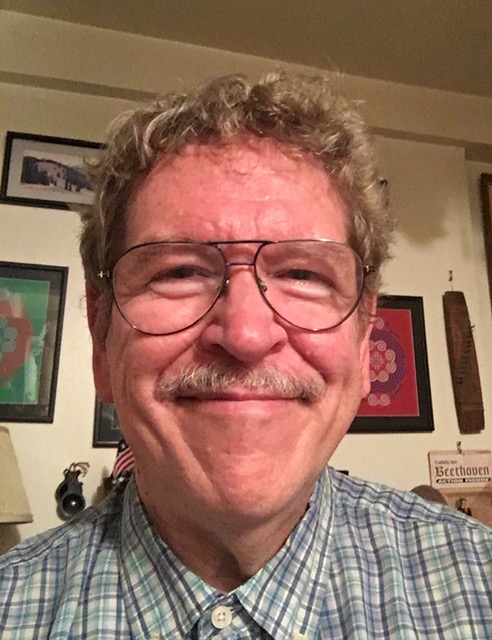 ERIC EWAZEN
ERIC EWAZEN
Ewazen's music has been performed by distinguished soloists, chamber ensembles, vocalists, wind ensembles and orchestras around the world. His music can be heard on some 70 commercially released CDs, by some of the finest recording artists of the 20th and 21st centuries. He has been a guest at over 150 colleges and universities worldwide, including 19 different countries and 49 states of the 50 United States.
Ewazen received his Bachelor of Music degree from the Eastman School of Music in 1976 and his Master of Music and Doctor of Music Arts degrees from The Juilliard School in 1978 and 1980, respectively. He is grateful to his composition teachers, which include Samuel Adler, Milton Babbitt, Warren Benson, Eugene Kurtz, Gunther Schuller and Joseph Schwantner. He has been a faculty member of The Juilliard School since 1980, teaching music theory in the College Division and composition in the Pre-College Division. He has served as vice president of the League of Composers-ISCM and composer-in-residence with the Orchestra of St. Lukes in New York City.
Ewazen's artistic philosophy is that music is sometimes there to provide joy and beauty, and sometimes there to provide comfort and healing and to be a mirror of our times.
Ewazen, who is also a pianist, has been a huge advocate and champion of new music for brass instruments, encouraging fellow composers and students to explore the unique, spectacular and beautiful colors of the instruments. He has collaborated with some of the greatest brass players of the 20th and 21st centuries.
He is so grateful for his collaborations with University of Maryland Professor Chris Gekker, one of the finest trumpet players of our time, for his inspiration and championing of his compositions, resulting in a wide variety of repertoire for brass instruments, from solo and chamber works to concerti and orchestral works. It is his firm belief that collaborations between performers and composers result in this continuance of new, enduring and constantly evolving music.
BRASS QUINTET
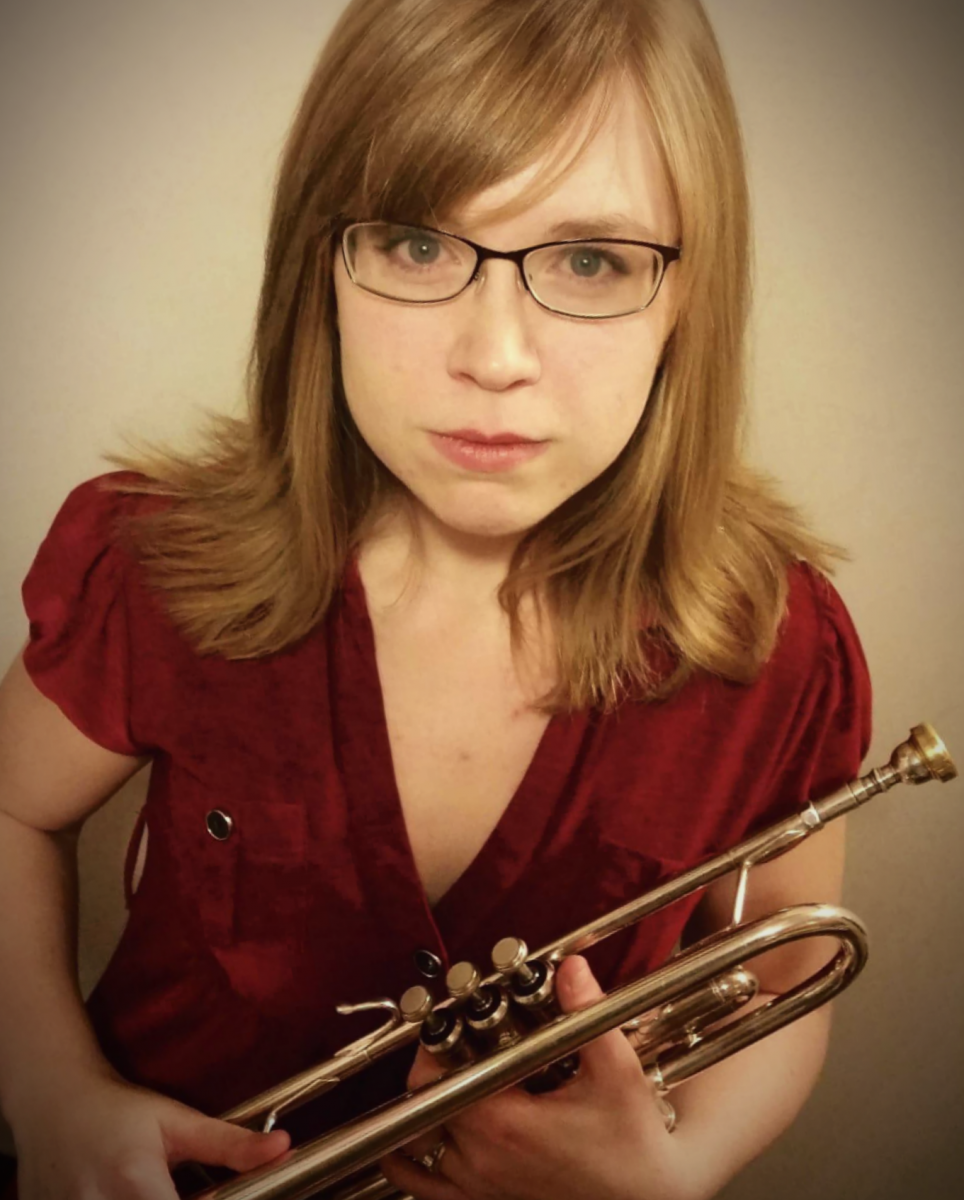 THERESA BICKLER
THERESA BICKLER
Originally from Rugby, North Dakota, Bickler is a doctoral student at the University of Maryland, College Park, where she holds a graduate assistantship, a Dean’s Fellowship Award and a College of Arts and Humanities Fellowship Award. Bickler maintains an active freelance career and has played principal trumpet with the Bismarck-Mandan Symphony Orchestra, the Missouri Valley Chamber Orchestra and the Dana Point Symphony. She has also performed with the Tucson Symphony Orchestra and the Americus Brass Band. She has had the opportunity to be a featured soloist with the Missouri Valley Chamber Orchestra in Bismarck, North Dakota, and the Minot Brass Ensemble in Minot, North Dakota. Bickler received her Bachelor of Music degree at the University of Mary in Bismarck, North Dakota, where she studied with Dennis Gowen. She earned her Master of Music degree at California State University, Long Beach (CSULB), where she studied with Ryan Darke, Robert Frear and David Washburn. While at CSULB, Bickler held a teaching assistant position for the trumpet studio and was also a coach for various university brass quintets and ensembles. Bickler is currently living in the College Park area while studying trumpet at the University of Maryland, College Park with Chris Gekker.
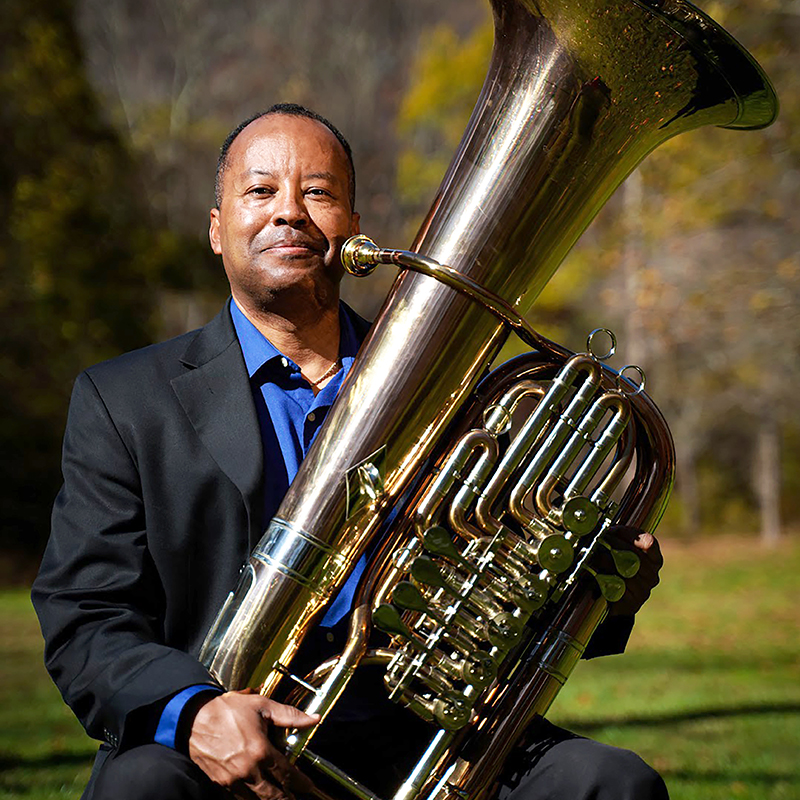 WILLIE CLARK
WILLIE CLARK
Clark is a member of the United States Air Force “Ceremonial Brass” in Washington, D.C., and was a founding member of the
Barclay Brass and the professional Disney tuba quartet, “The Tubafours.” Clark received his Bachelor of Music degree studying with Fritz Kaenzig at the University of Illinois and his Master of Music degree studying with David Zerkel and Fred Mills at the University of Georgia.
From the Fall of 1998 to 2003, Clark served on the adjunct faculty for Stetson University. He has also served on the adjunct faculty for Bethune-Cookman College. He joined the faculty of the University of Maryland, College Park as lecturer of tuba in Fall 2021.
As a performer, Clark has toured the United States, South America, Australia, China and Japan, as well as eighteen countries in Europe. During these travels, he performed with the China National Symphony, the Empire Brass for the Campos do Jordao Winter Music Festival and USA Tour, American Wind Symphony Orchestra, Sam Rivers’ RivBea Orchestra and Keith Brion’s New Sousa Band. In 1986, Clark was featured on the Chicago radio station WBEZ, performing The Flight of the Bumblebee.
Clark served as a low brass clinician on the European Tour with the American Wind Symphony Orchestra. You can hear him on the Tubafours’ CD, “Tubas Under the Boardwalk.” He has also recorded with the American Wind Symphony Orchestra, the United States Air Force Band, Alfred Publishing, Warner Brothers and Electronic Arts.
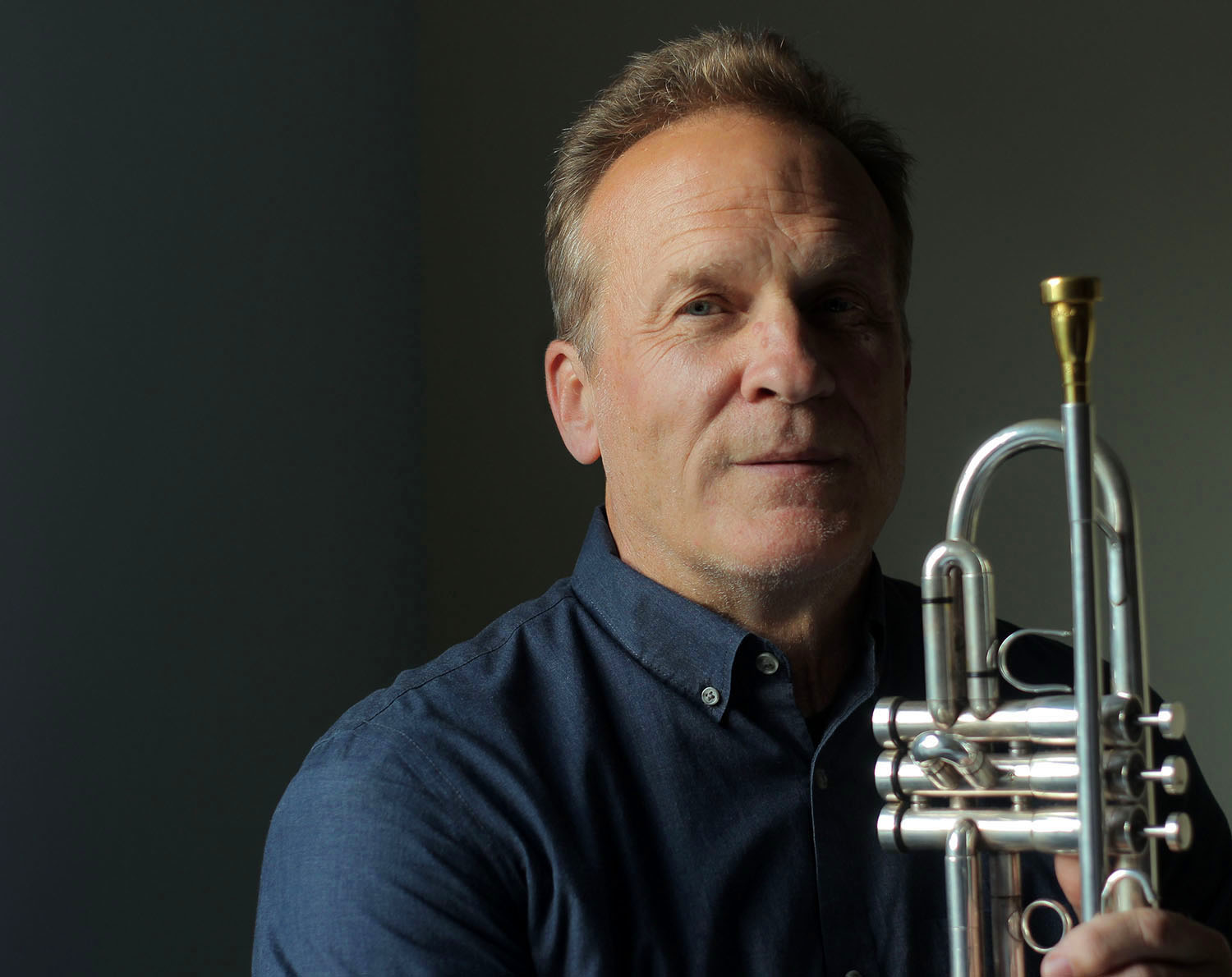 CHRIS GEKKER
CHRIS GEKKER
Gekker is professor of trumpet at the University of Maryland School of Music. He has been featured as soloist at Carnegie Hall and Lincoln Center and throughout the United States, Europe and Asia. After performances of J.S. Bach’s Christmas Oratorio and Brandenburg Concerto No. 2 at Carnegie Hall, the New York Times praised his “bright virtuosity” and described his playing as “clear toned and pitch perfect.” Gekker appears on more than 30 solo recordings and on over 100 chamber music, orchestral, jazz and commercial recordings. CD Review called his 1985 recording of Aaron Copland’s Quiet City “a model of quiet perfection,” and in a 1994 overview of several solo Hovhaness recordings, Gramophone Magazine described Gekker’s performances as “astonishingly poised.” Of his 1995 recording of Eric Ewazen’s Sonata for Trumpet and Piano, American Record Guide stated: “Ewazen writes that he had Gekker’s sound in his mind when he wrote the Sonata, and I can understand why. It is round, soft edged, gorgeous at soft dynamic levels and always full and well controlled at fortissimo.” Gekker is one of the featured artists on the 2005 Deutsche Grammophon compilation “Masters of the Trumpet.”
Gekker was a member of the American Brass Quintet for 18 years and has served on the faculties of The Juilliard School, Manhattan School of Music and Columbia University. He was principal trumpet of the Orchestra of St. Luke’s and a member of the St. Luke’s Chamber Ensemble, and has been awarded Emeritus status for his work with this organization. Gekker frequently performed as principal and soloist with the Orpheus Chamber Orchestra and was often featured with the Chamber Music Society of Lincoln Center. He has been a guest principal trumpet of the New York Philharmonic, San Francisco Symphony, the Santa Fe Opera and the Baltimore Symphony. Gekker has performed and recorded with many jazz and commercial artists, often for television and movies. In 2009, he recorded and toured with Sting, and is featured on the DVD “A Winter’s Night,” which was recorded live at Durham Cathedral in Durham, England.
In the Washington, D.C. area, Gekker serves as principal trumpet of the National Philharmonic at Strathmore, the Washington Ballet, Washington Concert Opera and the Post Classical Ensemble. During the summer, he is principal trumpet at the Eastern Music Festival in Greensboro, North Carolina. Gekker has been committed throughout his career to education and community service. In 2013, the Maryland Classics Youth Orchestra awarded him the Chester J. Petranek Community Award “for outstanding community service in enriching the musical life in the Washington, D.C. Metropolitan area.”
Many of his students occupy orchestral positions in major symphonies throughout the world, as well as being prominent in jazz, chamber and commercial music. His Articulation Studies, 44 Duos, Endurance Drills, Piccolo Trumpet Studies, 24 Etudes, Slow Practice and Focal Point Exercises are available from Charles Colin Publications and are sold worldwide. Slow Practice (2016) has been translated to Japanese. Gekker was born in Washington, D.C., grew up in Alexandria, Virginia, and is a graduate of the Eastman School of Music and the University of Maryland, College Park. His teachers include Emerson Head, Sidney Mear, Adel Sanchez and Gerard Schwarz. In 2018, the University of Maryland awarded Gekker the rank of Distinguished University Professor. He is the first professor from the School of Music to receive this honor.
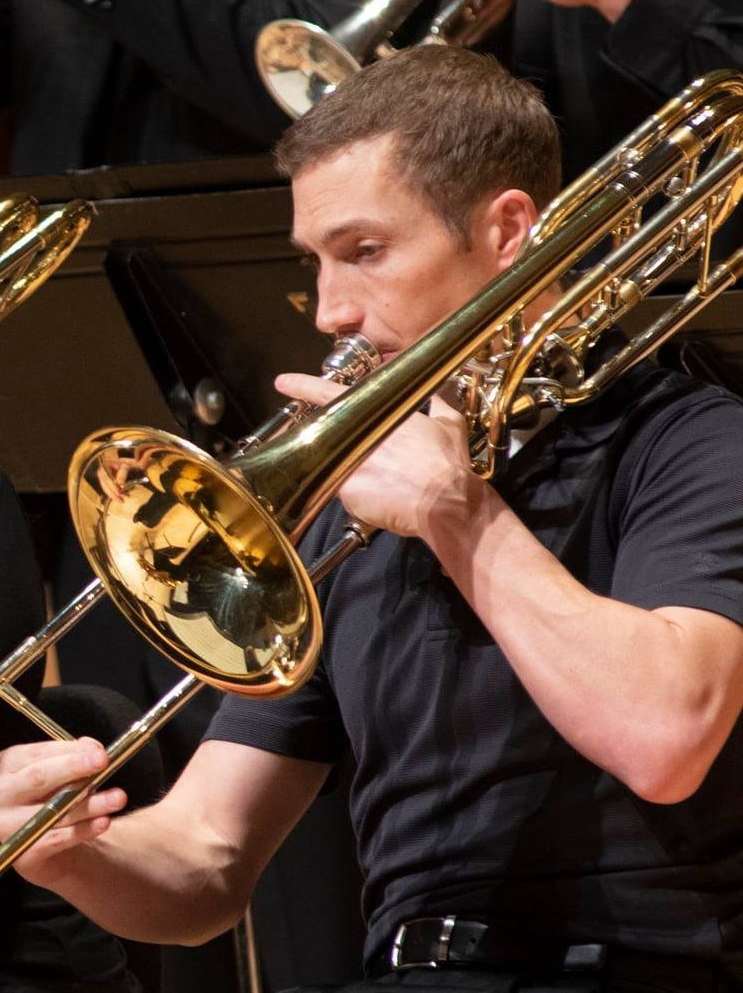 KEVIN HERTLEIN
KEVIN HERTLEIN
Hertlein is currently a student in the doctoral program for bass trombone performance at the University of Maryland, College Park. He earned a Bachelor of Music degree from Mars Hill College in 2009 and a Master of Music degree from Colorado State University in 2016. Prior to attending the University of Maryland, Hertlein played in the Paris Island Marine Band and Quantico Marine Band from 2010 to 2018. His teachers include James Sparrow, Karl Johnson and Matthew Guilford. He currently teaches at the Community College of Baltimore County in Essex, Maryland.
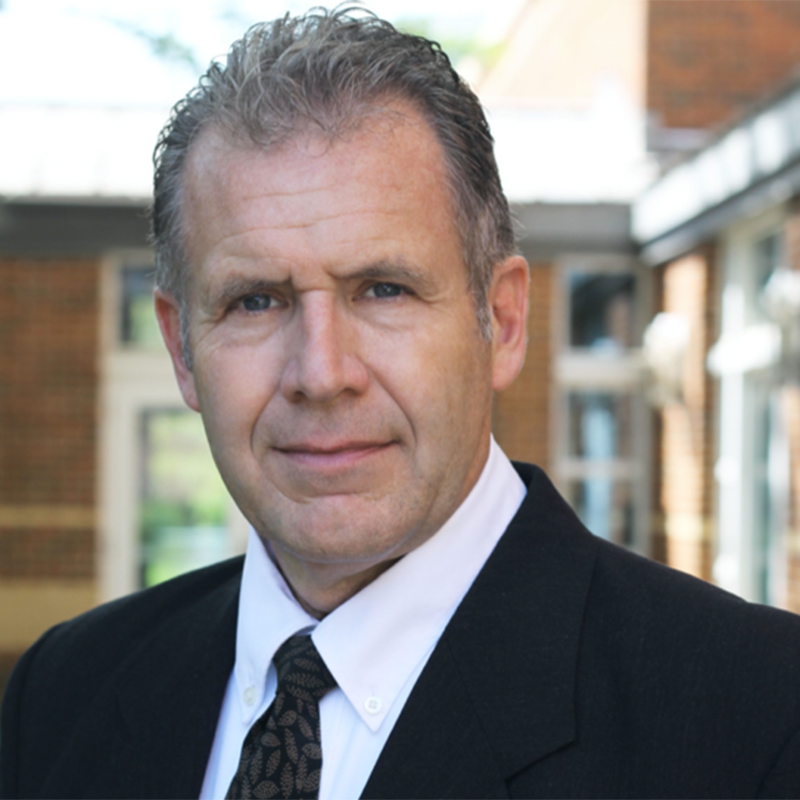 GREGORY MILLER
GREGORY MILLER
Miller, director of the School of Music and professor of horn at the University of Maryland, College Park, has been a member of the faculty since 2000 and previously served as associate director for academic affairs and director of undergraduate studies.
Over the course of his career, Miller has established himself as an accomplished chamber musician, orchestral player, soloist and teacher. He was appointed hornist of the Empire Brass in 1997, and over the next fifteen years, he presented hundreds of concerts, masterclasses and clinics throughout the world. The Los Angeles Times hailed the Empire Brass as “lavishly endowed in technique and musicianship. Individually and collectively they proved brilliantly virtuosic.” In addition to concertizing throughout the United States, Miller has performed in 25 countries spanning five continents at venues including Carnegie Hall, the Kennedy Center, Suntory Hall, the Barbican Centre, the Mozarteum and the Musikverein, to name but a few. Recorded on the Telarc label, Miller can be heard on EBQ’s
"Class Brass: Firedance" and the
"Glory of Gabrieli."
His orchestral career began in 1991 as a fellow with the New World Symphony under Michael Tilson Thomas. He appeared on three NWS recordings on the Argo Decca label; one of these, "Tangazo: Music of Latin America," received a Grammy nomination. In 1994, Miller was appointed associate principal horn and assistant personnel manager of the Honolulu Symphony Orchestra. He has regularly performed in the horn sections with the Detroit, Pittsburgh, Baltimore and National symphony orchestras as well as with the Miami City Ballet, Washington Ballet, Kennedy Center Opera and Palm Beach Opera orchestras. In 2015, Miller performed as guest principal horn with the National Symphony Orchestra of Costa Rica. The following year he served as guest principal horn for the National Symphony Orchestra of Mexico’s European tour.
As a soloist, Miller has performed with the United States Navy Band of Washington, D.C., the National Symphony Orchestra of Costa Rica, the Daegu Symphony Orchestra of South Korea, the Palm Beach Symphony and the American Wind Symphony among others. His first solo recording, "
From Bach to Bernstein," was released in 2002 on the MSR label. The American Record Guide hailed his next recording, "
Solos for the Horn Player," as “accurate, cohesive, and expressive.” He also recorded "
American Brass Trios" for Albany Records with University of Maryland colleagues Chris Gekker and Matthew Guilford, which Fanfare Magazine described as “exquisitely performed….There is simply nothing not to like about this CD.”
Miller has served on the faculties of the University of Hawaii, Florida Atlantic University and Florida International University. He is a distinguished artist in residence at the Conservatory of Music at Lynn University, a position he has held since 1996. He has appeared as an international clinician with the Pacific Music Festival (Japan), the International Brass Festival (Australia), the Festival Internacional De Inverno De Campos Do Jordão (Brazil), the Festival de Musique de Saint-Barthélemy (French West Indies) and the Music Festival of Santiago de Queretaro (Mexico). Miller has also performed with the Colorado Music Festival, the Monadnock Music Festival and the Sunflower Music Festival. He currently serves on the faculties of the Miami Music Festival and the National Orchestral Institute.
A native of Youngstown, Ohio, Miller received his Bachelor of Music in horn performance from the Oberlin College Conservatory of Music where he studied with Robert Fries, former co-principal horn of the Philadelphia Orchestra. Other teachers have included Eric Ruske, William Slocum and Larry Miller. Gregory Miller is married to violinist Laura Hilgeman and together they have six children.
UNIVERSITY OF MARYLAND WIND ORCHESTRA
Music Director
Michael Votta, Jr.
Graduate Conductor
Brad Jopek
Flute
Angelina Lim
Selia Myers
Erica Spear
Madeline Swartz
Piccolo
Madeline Swartz
Alto Flute
Erica Spear
Oboe
Stephanie Treat
Nathaniel Wolf
English Horn
Katelyn Estep
Bassoon
Temon Birch
Makayla Bowen-Longino
Robby Burns
Christian Whitacre
Contrabassoon
Robby Burns
Clarinet
Julie Berry
Alexander Dudkin
Chase Hogan
Ashley Hsu
Brooke Krauss
Emma Selmon
Alex Villa
E-flat Clarinet
Emma Selmon
Bass Clarinet
Alexander Dudkin
Chase Hogan
Brooke Krauss
Contrabass Clarinet
Brooke Krauss
Soprano Sax
Joshua Mlodzianowski
Alto Sax
Joshua Mlodzianowski
Willie Hadnot
Tenor Sax
Abigail Jones
Baritone Sax
Emily Wolf
Horn
Eric Aaron
Danielle Cornwell
Molly Flanagan
Allison Happ
Andrew Mincey
Trumpet
Ivanna Ajakpo
Theresa Bickler
Allison Braatz
Maria Carvell
Caleb Johnson
Julia Tsuchiya-Mayhew
Trombone
Gilberto Cruz
Lorraine Montana
Raymond Schleien
Bass Trombone
Austin Fairley
Euphonium
Hiram Diaz
Tuba
Pasquale Sarracco
Marlin Thomas
Timpani
Robert Rocheteau
Jonathan Sotelo
Percussion
Jason Amis
Maia Foley
Thomas Glowacki
Kyle Graham
Jonathan Monk
Robert Rocheteau
Jonathan Sotelo
Harp
Lauren Twombly
Willow Watkins
Graduate Assistants
Christine Higley
Brad Jopek
Alexander Scott
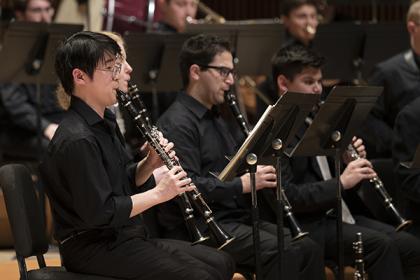
 BRAD JOPEK
BRAD JOPEK ERIC EWAZEN
ERIC EWAZEN THERESA BICKLER
THERESA BICKLER WILLIE CLARK
WILLIE CLARK CHRIS GEKKER
CHRIS GEKKER KEVIN HERTLEIN
KEVIN HERTLEIN GREGORY MILLER
GREGORY MILLER
.jpg)